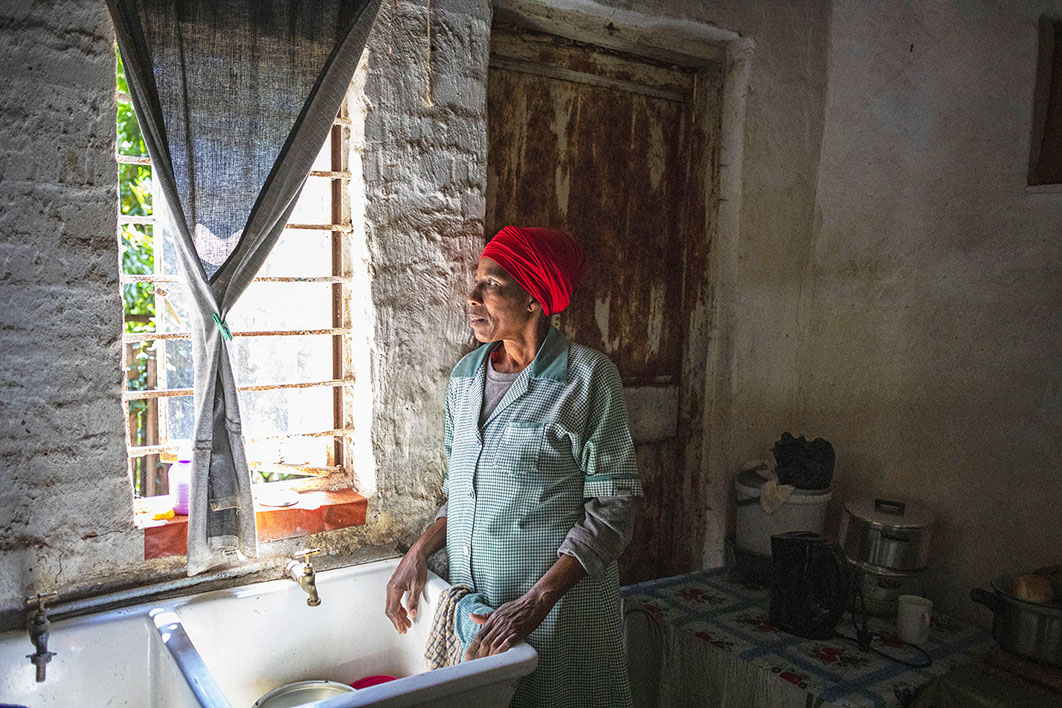A virus, we are continually reminded, knows no borders. Yet the number one response to the spread of Covid-19 has been the shutting of borders — first national borders and then, where they exist, state borders. Now calls are coming to close borders we hadn’t even heard of, like North Queensland’s.
For some, this closing of borders is a sign that globalisation was all a big mistake — that Covid-19 proves we should retreat into smaller and smaller communities. Others see travel restrictions merely as a pragmatic way of slowing viral spread, and point to flourishing global solidarity in shared experiences of quarantine.
The debate is an old one. Human geographer Yi-Fu Tuan is just one theorist who has pointed to divergent attractions of the hearth — with all it implies in terms of closed, monocultural societies — and the cosmopolitanism that must make rules to accommodate difference within shared social space.
Ilona Kickbusch, director of the global health program at the Graduate Institute in Geneva, has suggested that a “cosmopolitan moment” occurred when the experience of SARS cemented a global commitment to the International Health Regulations: “Cosmopolitan moments are points in time at which the global community comes together and creates new institutions and mechanisms that it has not otherwise been willing to introduce.” Covid-19, she writes, is just such a moment, teaching us “that international solidarity is an essential response and a superior approach to isolationism.”
Despite the recognition of Covid-19’s spread to nearly every territory on Earth, national differences in epidemic curves, infection rates and death rates have been eagerly seized on. Those comparisons have been used partly to calibrate the intensity of a country’s own responses, especially when it comes to restrictions of movement. Naturally, the success or otherwise of epidemic containment strategies and their associated models has been eagerly pored over. (Perhaps too eagerly in some cases — thirty-six hours after the head of the Imperial College modelling team, Neil Ferguson, attended 10 Downing Street in mid March he came down with the telltale Covid-19 symptoms and tested positive. He has since recovered.)
But some of the differences don’t yet have a good explanation. Why are Germany’s death rates a tenth of those in Italy, for example? Will the disparity be sustained? Are they real differences in clinical progress, or just a marker of different stages in the epidemic and different denominators of the size of the infected population? As the former Chinese premier Zhou Enlai might remark, “Too early to say.”
Chance cannot be discounted as the underlying reason for these differences. For nearly two decades, it was a mystery why HIV rates in the Philippines and Japan had remained so low, even in the most likely populations, such as gay men. All the risk factors looked similar to comparable countries in the region and across the world. Then, in the early 2000s, HIV rates suddenly took off in both countries, and the response that had been on hold for years had suddenly to be ramped up.
Epidemics are subject to the dynamics of population mixing patterns, environmental and other conditions, and purely chance infection events. Even subtle differences can have major impacts, so it is important not to over-interpret models or emerging empirical evidence.
It is even possible that the origin story of SARS-CoV-2 will change, and that ground zero may not be a wet market in Wuhan. There have been intriguing signs of clusters of unexplained severe pneumonias in northern Italy as far back as October 2019, and epidemiological detective work is being undertaken by the University of Milan’s Professor Adriano Decarli. Chinese media have amplified the theory that the virus originated in Italy and was transported to Wuhan — the vector in either direction being the trading links between the two regions, eerily reminiscent of the plague’s progress along the old Silk Road.
The Silk Road also features in a heated debate in international relations circles between those who welcome China’s post-Wuhan assistance to a world in need via a “health silk road,” and those who decry this as propagandising. As Chinese writer Wang Xiuying wryly reflected back in February from lockdown in Wuhan, “In the West, panda-huggers say no other government would be doing better [than China’s] under the circumstances; dragon-slayers are cheerleading for the end of communist rule, as they do every time there is trouble in China. Whatever happens, those arguments won’t change.”
The brute force of the epidemic will shape those debates, nowhere more so than in the United States, where the limitations of market-based healthcare are being laid bare. Healthcare interest groups, trained to maximise their profits, are behaving badly amid rampant profiteering and the hoarding of intellectual property. System infrastructure shows many signs of fracture.
Something clearly went wrong with the high-profile global health security index, released last year, which ranked the United States as the country best prepared for a pandemic, and Britain second. (Australia was in fourth place.)
Some countries, meanwhile, have surprised in the strength and quality of their response. Given South Africa’s tardy and conflicted response to HIV, which left it with the world’s biggest epidemic, it may have been expected to struggle with the added challenge of Covid-19. But perhaps the long challenge of HIV led to all the necessary learnings. In my view, South Africa’s Covid-19 health portal is the best in the world: the number of tests, positives, recoveries and deaths are displayed in a daily ticker, and links provide clear and coherent video guides for all audiences. President Cyril Ramaphosa has provided clear and calming leadership, initiating a three-week nationwide lockdown from 26 March. Health minister Dr Zweli Mkhize has run the day-to-day response, which includes mobile testing units.
That is not to say challenges won’t arise. Many South Africans have very few resources on hand to tide them over, even for the briefest periods. Over the border in Zimbabwe, which has been struggling with a comatose economy, the situation is worse. A few days ago I was forwarded a WhatsApp message from a single mother in one of the poorer suburbs of Harare who had been warned, and was able, to stock up on goods before the nationwide lockdown came into force: after three days, she said, her neighbours are crying out of hunger. When water comes from a communal pump, the practicality of physical distancing also comes into question.
It’s easy to become obsessed by the unfolding epidemiology of a pandemic. But the epidemiology is only one small part of a picture, and is mainly useful to predict what case numbers are coming down the track. The much bigger part of the picture is the response itself: the changing of behaviour to minimise cases and the treatment given to those who fall ill.
The US National Institutes of Health’s global database of clinical trials today lists 306 registered clinical trials for Covid-19 treatments. Some potential treatments have received global attention, others not. But expect over the coming weeks dozens and dozens of stories of promising compounds that kill SARS-CoV-2 in the test tube, almost all of which will eventually fall by the wayside.
The clinical techniques for managing those made most ill by Covid-19 are advancing rapidly. But the unprecedented flood of medical writing, published in record time, brings its own problems, with good peer reviewing in short supply. Some results are counterintuitive. I was surprised by an analysis that showed asthma sufferers to be under-represented in cases diagnosed with Covid-19: reasons are not yet clear, but it should give some comfort to those who have been worried that they were at higher risk, even as more definitive answers are sought.
Systematic research on the behaviours that sustain good Covid-19 responses still seems to be lagging. The COSMO initiative, which comes out of the World Health Organization’s Europe office, is a welcome exception. It provides a standard protocol and platform to collect data on knowledge, risk perceptions, preventive behaviours, and public trust during the current coronavirus outbreak. Already, national data collections are under way in Germany, Denmark and Argentina.
The stern policing that seems to undergird the current phase of the Australian Covid-19 response is not the same as the lasting response that will be needed until Covid-19 fades into the background. And that response will depend on the public’s willingness to police itself by communally developing new social norms based on good health literacy. We can be cosmopolitans and devise the new rules to live with one another, because the alternative is solitary, poor, brutish and short. •




